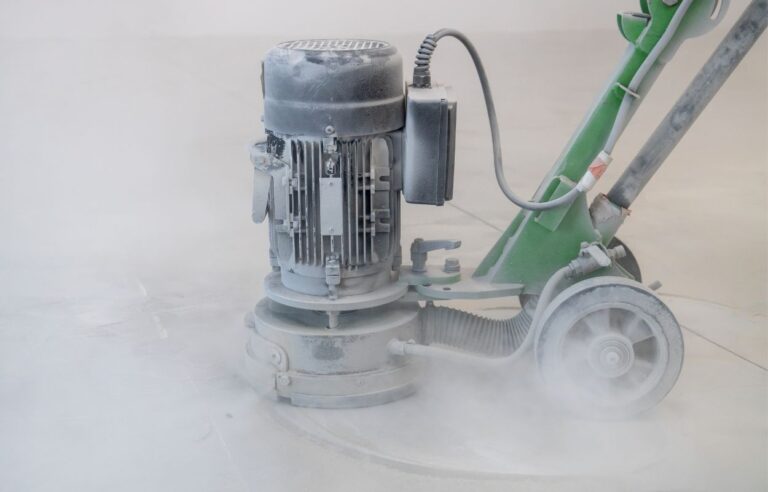
When it comes to keeping your home safe and healthy, lead is a silent threat you can’t ignore. Found in old paints, pipes, and even soil, lead poses serious health risks, especially for young children. But here’s the good news: removing it doesn’t have to harm the planet. By using eco-friendly lead abatement methods, you can create a safe space for your family while taking care of the environment. Whether you’re tackling lead abatement in Nanaimo or beyond, let’s dive into sustainable practices that make your home safer without adding to pollution.
WHY LEAD IS A PROBLEM YOU CAN’T OVERLOOK
Lead exposure is no joke. Even small amounts can cause developmental issues in children, affect brain function, and lead to serious health problems in adults. The risks are higher in homes built before 1978, as many of them contain lead-based paint. When this paint deteriorates, it releases harmful particles into the air.
Water contamination is another concern. Old lead pipes can leach toxins into your drinking water, creating a hidden hazard. Soil near older homes or industrial areas may also contain lead, which can stick to your shoes and spread indoors.
Ignoring lead risks doesn’t just endanger your family—it impacts the wider environment. Traditional abatement methods can release toxins into the air and soil, making sustainable practices even more critical.
WHAT MAKES A GREEN APPROACH DIFFERENT?
Green lead abatement focuses on removing lead safely while minimizing environmental harm. It avoids harsh chemicals and reduces waste. It’s about keeping toxins out of your home and the environment. Using sustainable materials and techniques ensures a healthier space without sacrificing our planet’s well-being.
This approach works for homeowners in Nanaimo, where sustainability is already part of the community’s culture. It’s all about finding solutions that protect your loved ones without leaving a heavy environmental footprint.
TESTING FOR LEAD: THE FIRST STEP TO SAFETY
Before you jump into any abatement project, testing is crucial. Start by identifying areas where lead might lurk. Professional inspectors use tools like X-ray fluorescence (XRF) analyzers to pinpoint lead-based paint. For water testing, labs analyze samples to detect contaminants. If you prefer a DIY route, affordable lead test kits are available. These kits let you swab surfaces and get quick results.
Testing gives you a clear picture of the risks and helps you plan the safest, greenest way to tackle them. You’ll know exactly where to focus your efforts and avoid unnecessary work.
ECO-FRIENDLY LEAD REMOVAL OPTIONS
When it comes to lead abatement, not all methods are created equal. Traditional techniques often rely on harsh chemicals and produce a lot of waste. Green options, however, prioritize safety for both your family and the environment.
Containment and Dust Control
Containment is key to eco-friendly lead abatement. Before you start, seal off the work area with heavy-duty plastic sheets. Use HEPA-filtered air scrubbers to trap airborne particles. This prevents lead dust from spreading and reduces contamination.
Dust control is another must. Wet-sanding or wet-scraping lead paint minimizes dust. Always keep surfaces damp while working to keep particles contained. These simple steps protect your home and make cleanup easier.
Safe Paint Removal
Stripping old paint doesn’t have to involve harsh chemicals. Eco-friendly paint removers, often made from plant-based ingredients, are effective and safer for the environment. They break down lead paint without releasing harmful fumes.
Another green option is infrared heat stripping. This technique uses infrared rays to soften paint, allowing it to be scraped off easily. Unlike traditional heat guns, infrared tools don’t create toxic fumes or scorch surfaces.
Replacing Lead-Contaminated Materials
Sometimes, replacing old materials is the best option. For instance, swapping out lead pipes for modern alternatives like copper or PEX ensures long-term safety. Similarly, replacing old windows, doors, or trim covered in lead-based paint can eliminate hazards while improving your home’s energy efficiency.
When replacing materials, consider recycling whenever possible. Many disposal facilities accept lead-contaminated items and ensure they’re handled responsibly. This keeps waste out of landfills and reduces environmental impact.
Soil Remediation
If your soil contains lead, don’t panic. Several eco-friendly methods can help. Planting certain types of grass or ground cover, known as phytoremediation, can absorb lead from the soil. You can also add clean soil or mulch to create a barrier, reducing exposure risks. For serious contamination, professional soil removal might be necessary, but always choose companies that follow green practices.
USING LOCAL RESOURCES FOR LEAD ABATEMENT IN NANAIMO
Living in a community like Nanaimo, you have access to a variety of local resources. Many eco-conscious companies specialize in lead abatement, offering sustainable solutions tailored to your needs. Hiring local professionals reduces the carbon footprint of your project by cutting down on transportation emissions.
Recycling facilities in the area can help dispose of lead-contaminated materials responsibly. Some even offer drop-off services for items like old pipes or painted wood. By tapping into these resources, you make your lead abatement project greener and support local businesses.
PROTECTING YOUR FAMILY DURING THE PROCESS
Safety should always come first during lead abatement. Start by wearing protective gear, including gloves, goggles, and a certified respirator. Keep kids and pets out of the work area to reduce exposure risks.
Proper ventilation is essential, especially if you’re using any products with fumes. Open windows and use fans to improve airflow. After completing the project, clean the area thoroughly with HEPA vacuums and damp cloths. This removes lingering dust and ensures your home is safe to enjoy again.
LONG-TERM LEAD SAFETY TIPS
Abatement is just the first step. To maintain a lead-free home, adopt habits that minimize future risks. Regular cleaning with a damp mop or cloth keeps dust under control. Avoid dry sweeping, which can spread particles.
If you’re planning renovations, test for lead before starting. Opt for eco-friendly materials and hire contractors who understand green practices. Staying vigilant helps you protect your family and keep your home a safe haven.
THE BIGGER PICTURE: WHY GREEN MATTERS
Choosing a green approach to lead abatement isn’t just about protecting your home. It’s part of a larger commitment to sustainability. By avoiding harmful chemicals and reducing waste, you contribute to a healthier environment. You also set an example for others, showing that safety and eco-friendliness can go hand in hand.
This is especially important for communities like Nanaimo, where the natural beauty of the area inspires sustainable living. By embracing green practices, you help preserve this environment for future generations.
READY TO GO GREEN?
Lead abatement doesn’t have to feel overwhelming. By using sustainable practices, you can create a safer home for your family while caring for the planet. Whether you’re dealing with lead paint, pipes, or soil, green solutions are available to meet your needs.
If you’re looking for help with lead abatement in Nanaimo, plenty of local experts can guide you. With the right tools, techniques, and mindset, you can tackle lead hazards confidently and responsibly. Let’s work together to make our homes and communities healthier—one green step at a time.





